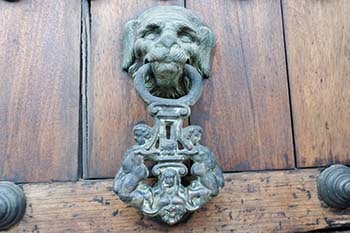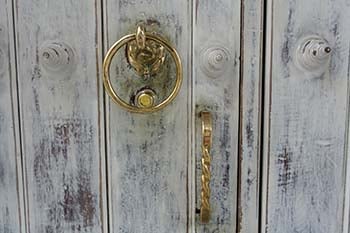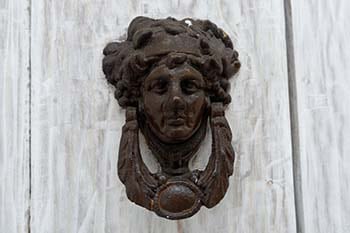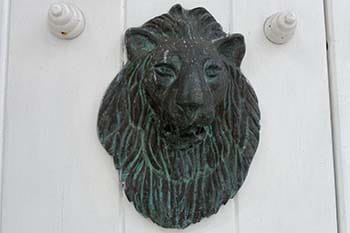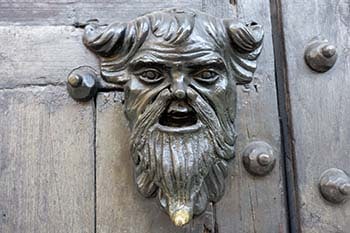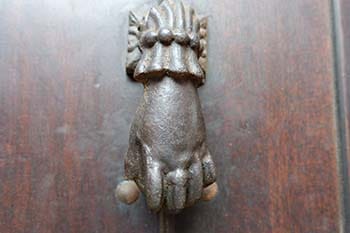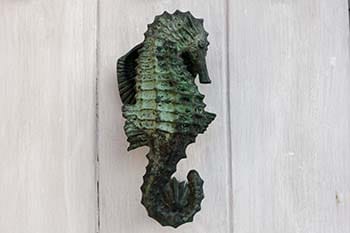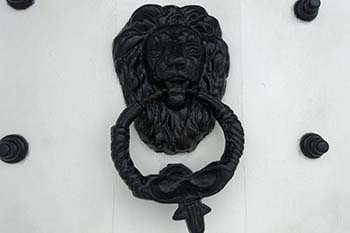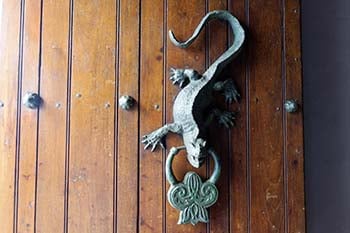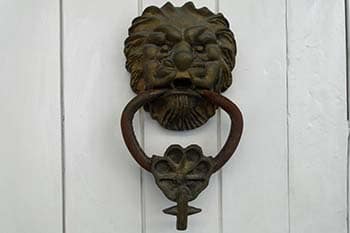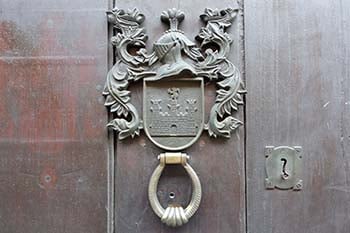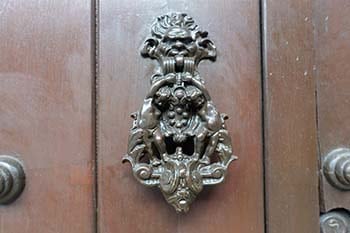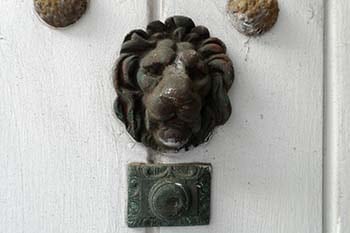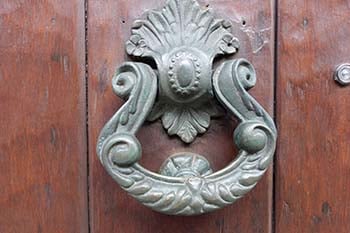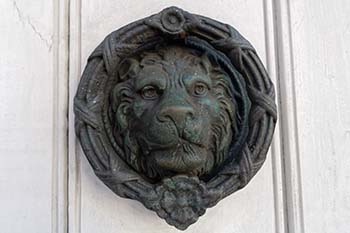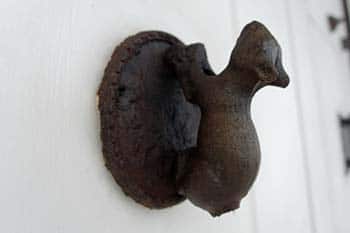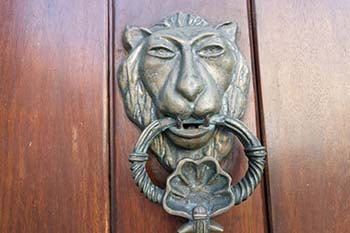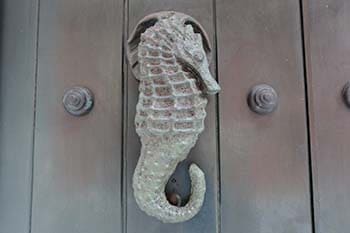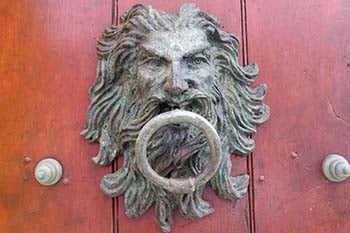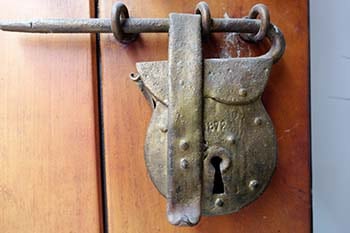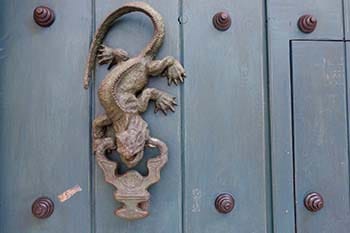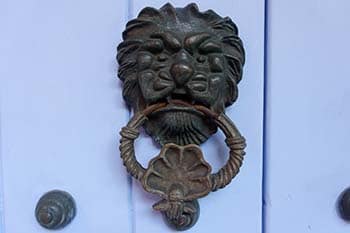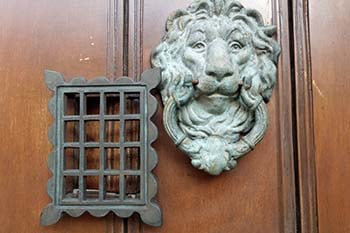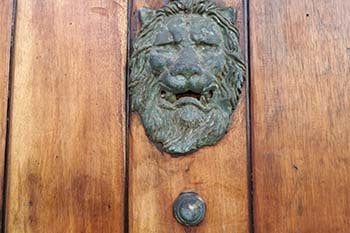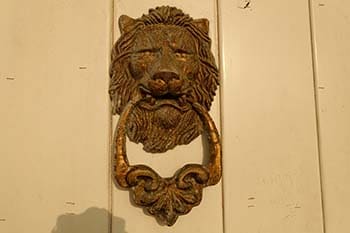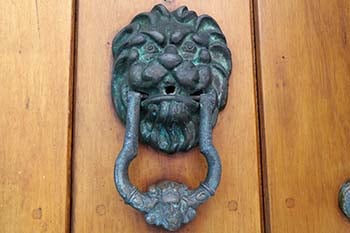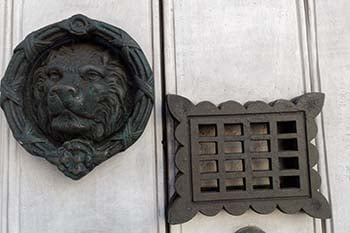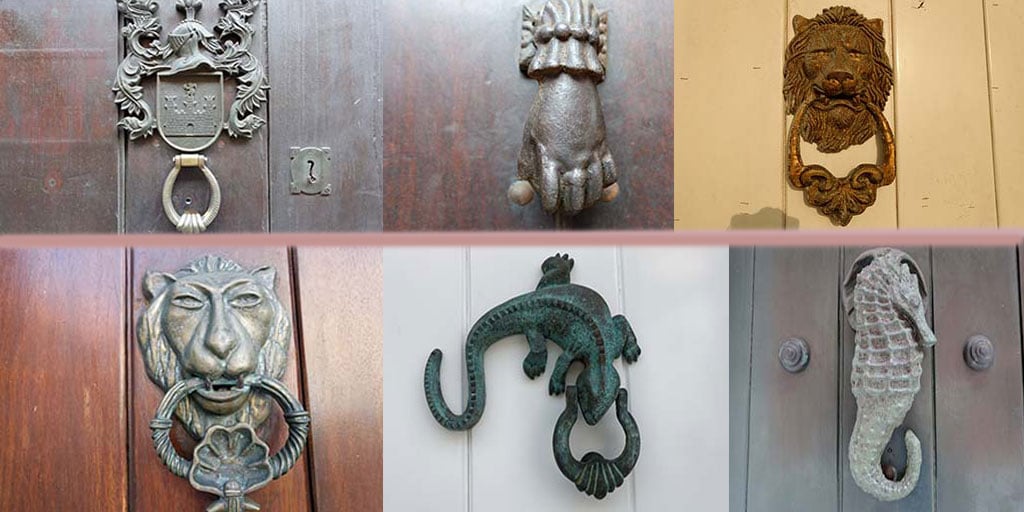
The Fanciful Door Knockers of Cartagena Colombia
Do you know the story behind the beautiful door knockers of Cartagena, Colombia? These unique icons (known in Spanish as aldabas) are more than just quirks of the Spanish Colonial Architecture you’ll find on every street in Cartagena’s Walled City and beyond. They represent a very important cultural component of life in Colonial Cartagena.
The Spanish Colonial Doors of Cartagena
Two of the most common questions visitors ask are: Why are the doors on the homes of Cartagena so big and lavish? And what’s with the smaller doors?
Firstly, because Cartagena enjoys a tropical climate (with temperatures hovering in the mid to upper 80’s year round), Spanish colonial homes were designed to use natural “air conditioning” (shade, air flow, water features, and planters) to keep interiors cool. The large door allows for the occasional outsized deliveries while the smaller inset door prevent blasts of hot air from entering as people come and go.
Secondly, these massive doors were one of the easiest ways to protect a home from pirates, privateers, and all the other enemies of the Spanish Crown who prowled the Caribbean and regularly raided Cartagena.
Lastly, the bigger, more ornate, and more elaborate your door was, the more impressive your family’s heritage and social positioning.
The Cultural Significance of the Door Knockers of Cartagena
Like the doors themselves, the door knockers held great importance in Colonial Cartagena society.
The overall size of the door knocker denoted the status of the family behind it. Simply put, the bigger the knockers the more important the individual or family. Some of the most elaborate aldabas are made from rarer metals and designed to appear animated when used (a mermaid’s tail flipping back and forth, for instance).
But size wasn’t the only consideration. As you stroll through the older parts of Cartagena you’ll no doubt notice all sort of figures and symbols (usually animals of some sort). The motif of the door knocker was a quick way to signify the profession of the homeowner. Each design denotes a specific trade, skill, or calling.
For example, marine motifs—turtles, fish, mermaids, and even more fanciful creations—adorned the doors of men who made their living from the sea, such as wealthy merchants and traders. Lions represented teachers, lizards represented royalty, masonic symbols represented builders or engineers, and so on. Think of them as a sort of symbolic sign to let everyone know who lived inside.
Door Knockers in Modern Cartagena
While the door knockers of Cartagena have lost almost all of their cultural significance in modern times, you will still find them on many Spanish Colonial homes, businesses, and office buildings. They have become an iconic symbol of the city itself and an eye-catching throwback to the storied history of Cartagena.
Many visitors love to play a sort of scavenger hunt game, snapping photos of the most unique and beautiful aldabas to take home as special mementos of their time here. How many different door knockers will you find during your vacation in Cartagena?
Rent a home in Cartagena with Cartagena Colombia Rentals and it is very likely that the entrance to your home will be as spectacular as you see in the pictures.
Martha Hampton
Martha Hampton
Home Curator
Founder of Cartagena Colombia Rentals & Hampton Property Rentals LLC

